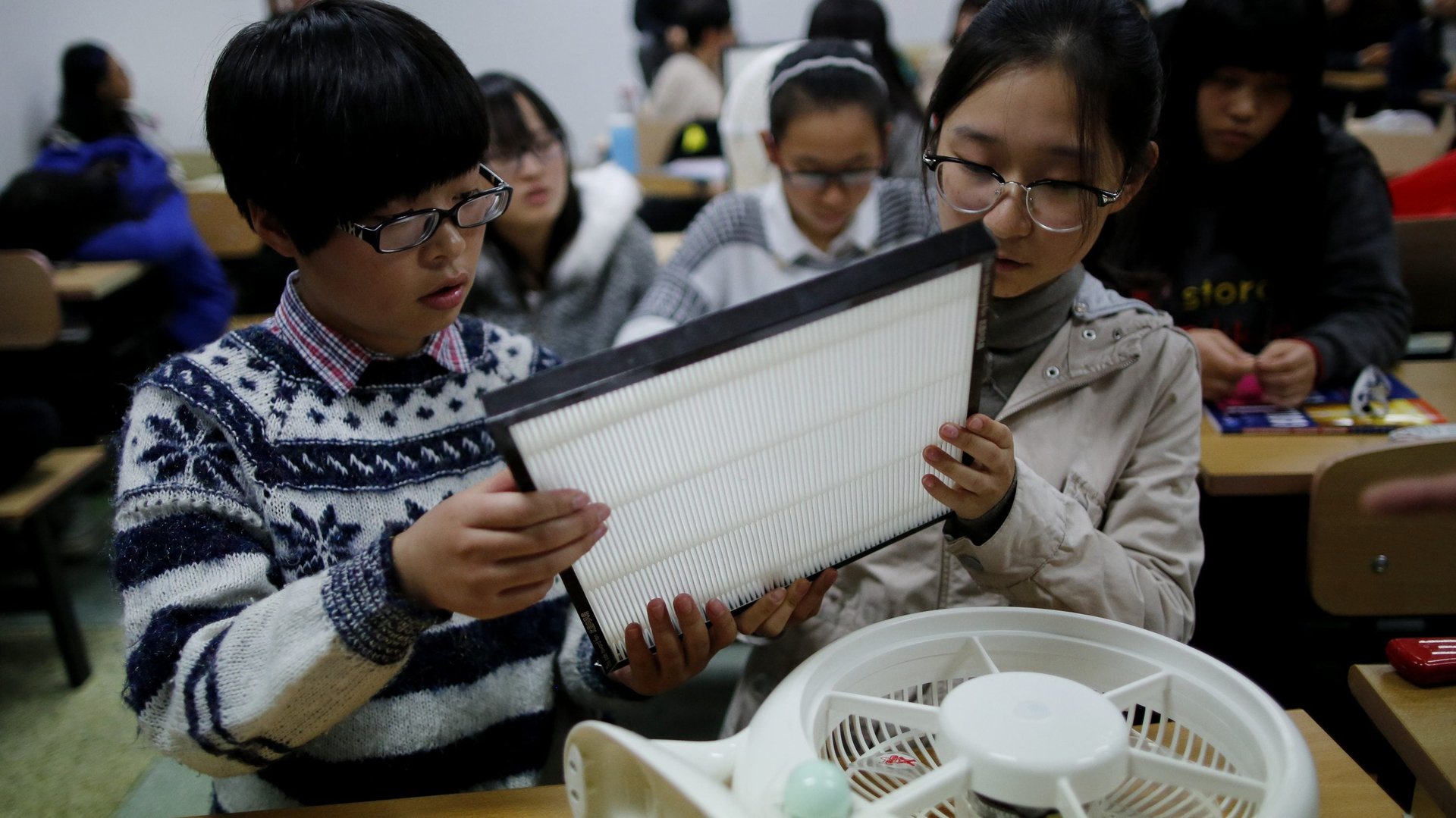You don’t need fancy air filter systems to reduce Covid-19 risk
Even before the World Health Organization acknowledged that the virus that causes Covid-19 can be transmitted via particles in the air, many people were wondering if air filtration systems could help reduce the amount of virus in the air. “I’m bombarded by emails,” says Jose-Luis Jimenez, a chemistry professor and aerosol expert at the University of Colorado at Boulder.


Even before the World Health Organization acknowledged that the virus that causes Covid-19 can be transmitted via particles in the air, many people were wondering if air filtration systems could help reduce the amount of virus in the air. “I’m bombarded by emails,” says Jose-Luis Jimenez, a chemistry professor and aerosol expert at the University of Colorado at Boulder.
A lot of those emails, he says, are from school principals whose maintenance staff says the school should spend tens of thousands of dollars on high-tech HVAC systems. The manufacturers of existing systems, or those looking to sell new technologies, promise to kill the virus, not just filter it out of the air. But is that really necessary?
There’s no one foolproof system to combat Covid-19 indoors. Buildings with central heating and cooling already have air filtration systems that can help reduce the amount of coronavirus particles in the air, lowering the risk that the particles will cause new infections. Many of them use mechanical filters to trap microbes and other particles in the air; depending on their performance level, filters can collect large particles such as dust and pollen, or particles as fine as smoke and pollution.
The good news is that researchers believe the coronavirus is pretty easy to trap in existing high-performance mechanical filters. Though the coronavirus itself usually measures about a tenth of a micron, virus-containing particles in the air are much bigger, mostly between 1 and 10 microns.
That makes a big difference in what a filter can do. In terms of mass, it’s the difference between a cat and an elephant, Jimenez says. “The cat may get through the nooks and crannies, but the elephant is very clumsy. It’s much easier to filter [out] than people think.” (At this scale, the larger droplets that fall within two meters of a person would be the mass of Godzilla, he adds.)
What’s more, the filters actively attract particles via static electricity. Even if the holes are larger than the particles, surprisingly little passes through.
For single-family homes or small spaces with central air, mechanical filters are probably adequate, says Bill Bahnfleth, a professor of architectural engineering at Pennsylvania State University. But in office buildings or schools, high-performance mechanical filters may reduce the flow of air too much, so additional systems can be useful. These systems work differently to rid the air of possible contaminants. One of the best-understood systems, germicidal ultraviolet, uses ultraviolet light to damage virus’ genetic code, making it no longer infectious.
Some systems on the market are less well understood, and may come with additional risks. Jimenez is concerned that processes like oxidation and ionization, intended to clean the air of harmful particles, could cause chemical changes in volatile organic compounds that can be introduced to a room by off-gassing wood and paint. These chemical changes could create compounds that present a health risk, though Jimenez says scientists aren’t sure how big a risk because it has not been studied in detail.
Though germicidal ultraviolet may be a good solution for larger buildings “when recommended filtration and ventilation upgrades are not possible,” Bahnfleth says, single-family homes where everyone is in the same coronavirus bubble may be fine with mechanical filters. Those with central air can upgrade their filters to “the best system they can tolerate,” as Jimenez says, often a MERV 13 or higher. Rooms without central air could benefit from portable air cleaners (sometimes known as air purifiers) that can cost a few hundred dollars each. Or you can make your own air filter using a box fan and a filter for about $30.
“No filter is really perfect protection against infection. There are many ways for them to fail to capture all the particles that are in the air,” Bahnfleth says. In shared indoor spaces, masks are still a great way to keeping coronavirus-carrying particles out of the air we breathe.